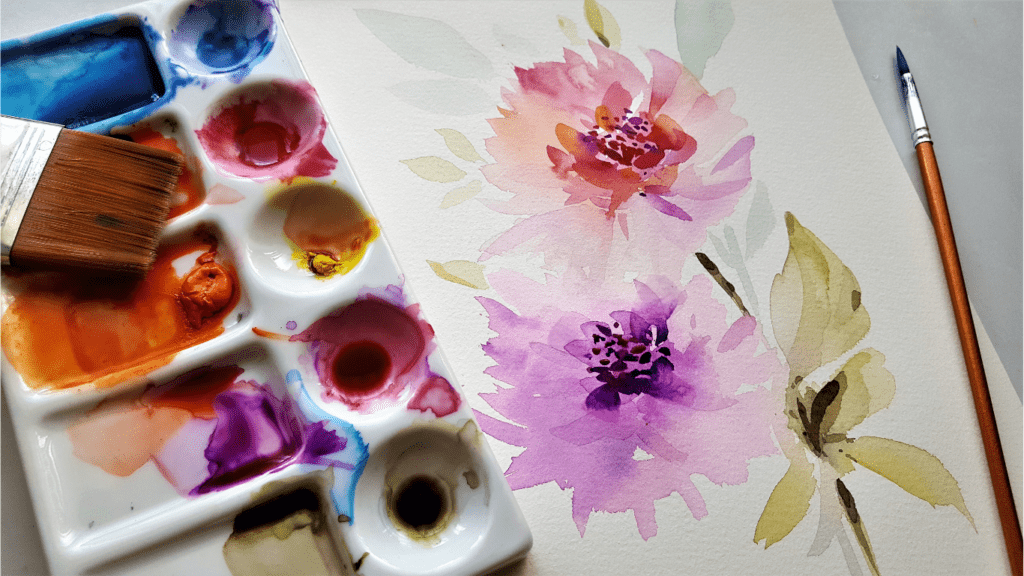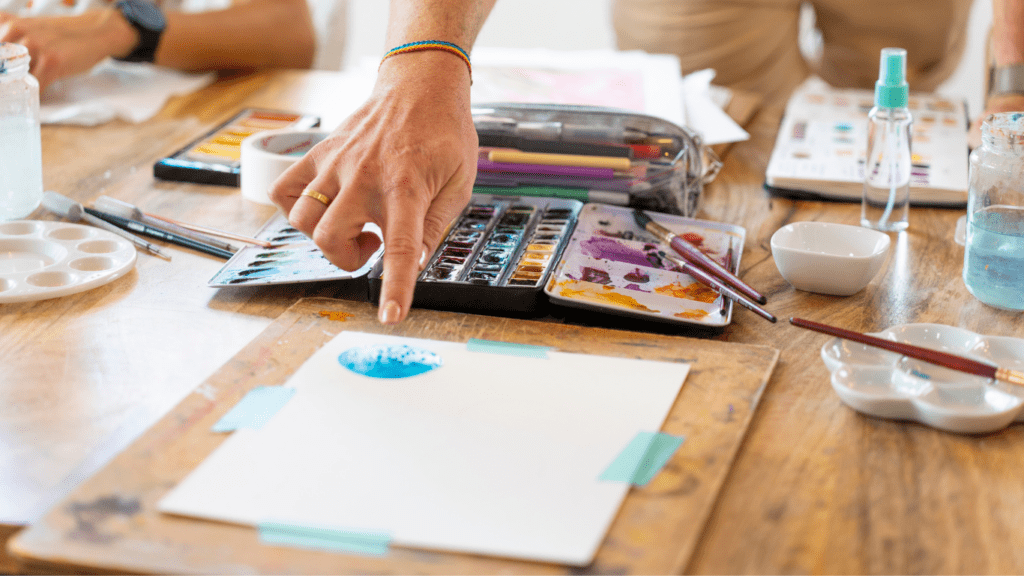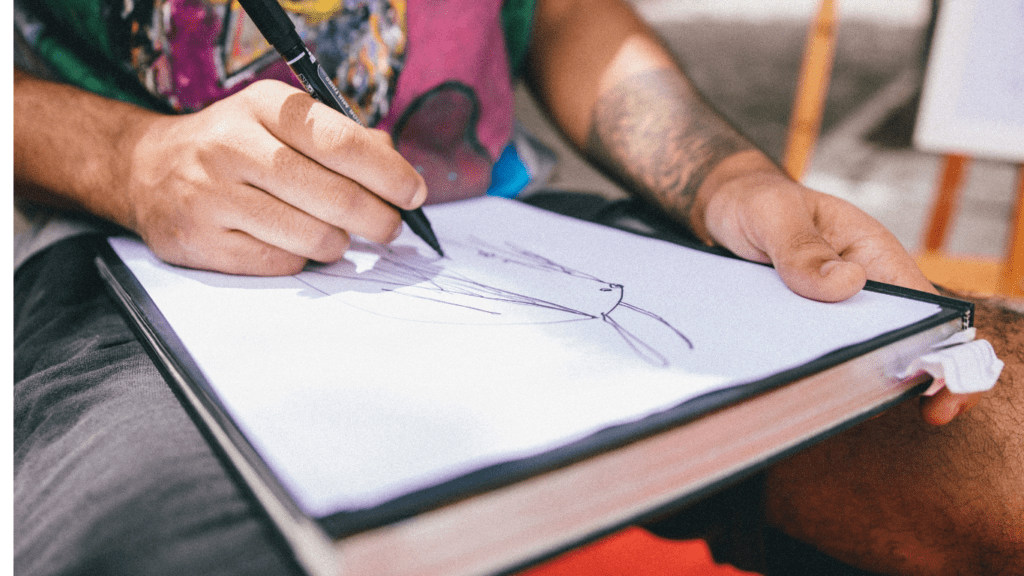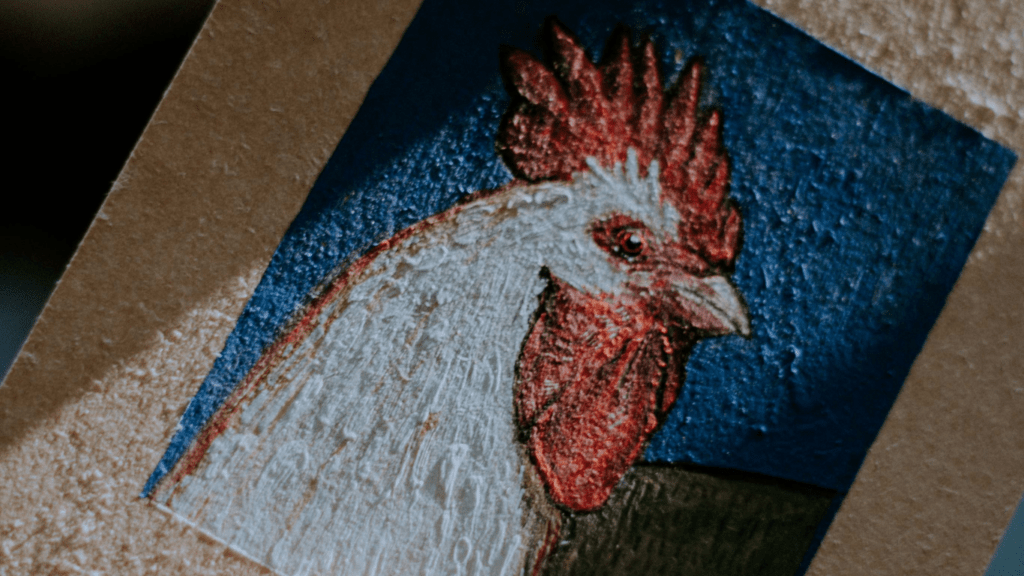Understanding Watercolor Painting
Watercolor painting uses pigments mixed with water to create artworks that range from detailed illustrations to loose, abstract pieces. This medium stands out for its transparency and luminosity. When painting, artists can layer colors to achieve depth and create intricate gradients.
Pigments come in various forms, including pans and tubes. Pans are solid, dry blocks activated with water, making them portable and easy to use. Tubes contain concentrated pigment in a paste form, allowing for more intense color application. I often choose between these based on the desired effect.
Watercolor paper is crucial. Its texture and absorbency directly affect how pigments blend and spread. Papers typically come in three textures: hot-pressed (smooth), cold-pressed (medium texture), and rough. The texture influences the painting’s final appearance, so selecting the right paper is key.
Brushes play a significant role. Round brushes are versatile, suitable for both detail work and washes. Flat brushes cover larger areas and create bold strokes. The brush size, shape, and bristle material all impact the painting process.
Mastering watercolor techniques is essential. Wet-on-wet involves applying wet paint on a wet surface, creating fluid, blended colors. Dry brush technique uses a dry brush with minimal paint, leaving textured, scratchy marks. Each method offers unique ways to express creativity.
Understanding these basics allows me to explore and experiment confidently. The magical process of blending pigments on wet paper forms the foundation of every watercolor painting.
Essential Supplies for Beginners
Starting with the right supplies is crucial for getting into watercolor painting. The right tools and materials make a significant difference in your results and satisfaction.
Types of Watercolor Paints
Two primary types of watercolor paints exist: pans and tubes. Pans are small, solid cakes of paint, ideal for portability and requiring minimal preparation. Tubes contain liquid paint, offering more intensity and easier mixing for larger works. Both types have advantages, so try both to determine which suits your style.
Brushes and Their Uses
Brushes vary widely in shape, size, and bristle type, essential for creating different effects. Round brushes are versatile for both broad strokes and fine details. Flat brushes excel in covering large areas and making sharp, crisp lines. Mop brushes hold more water and pigment, perfect for washes and blending. Investing in a set with varied shapes and sizes provides flexibility in your projects.
Paper Selection
Paper quality affects the final outcome of your watercolor piece. Look for paper specifically labeled for watercolors, usually categorized by weight and texture—cold-pressed paper, with a slightly rough texture, is standard for beginners due to its versatility and ability to handle multiple washes. Hot-pressed paper, being smoother, is better for detailed work. Ensure the paper is at least 140 lb (300 gsm) to prevent warping.
Basic Techniques to Get Started

Mastering basic watercolor techniques lets artists explore control and spontaneity in their work. Here are key techniques to help you get started.
Wet-on-Wet Technique
Applying the wet-on-wet technique involves painting on damp paper, creating organic blends. Artists start by wetting the paper, then adding watercolor. This technique results in soft edges and natural color transitions, useful for skies and landscapes. Puddles of water control the pigment spread.
Wet-on-Dry Technique
In the wet-on-dry technique, you paint wet watercolor onto dry paper. This approach produces sharper edges and defined lines, ideal for details. Artists apply less water to control color placement more precisely. This technique works well for architectural elements and controlled shapes.
Dry Brush Technique
Using the dry brush technique requires a nearly dry brush, dipped in pigment. Artists drag this brush lightly across dry paper, creating textured and detailed effects. This method is perfect for adding texture like:
- grass
- hair
- fabric
It offers a greater control over pigment application.
Mastering Fundamental Skills
Mastering watercolor painting requires focusing on key skills that enhance control and spontaneity. I’ll share tips on color mixing and creating gradients and washes to help you develop these crucial techniques.
Color Mixing Tips
Mixing colors effectively brings life to watercolor paintings. I start with a limited palette—red, blue, and yellow—to understand how primary colors interact. When blending, I mix small amounts on a palette to avoid waste. For richer tones, I’ll layer rather than over-mix to maintain transparency.
Creating Gradients and Washes
Gradients and washes add depth and dimension. To create a gradient, I dampen the paper first, then apply the paint, gradually diluting it with water for a seamless transition. For washes, I use a broad brush to cover large areas with uniform color, maintaining even pressure for consistency.
Common Mistakes to Avoid
Many beginners encounter similar issues when starting watercolor painting. Recognizing these mistakes helps improve technique and results.
Using Too Much Water
Excess water can lead to diluted colors. When too much water is on the paintbrush, colors lose their vibrancy and unintended blending occurs. To control this, tap the brush lightly on a paper towel before applying paint.
Skimping on Paper Quality
Low-quality paper often buckles and doesn’t absorb paint well. Using high-quality watercolor paper ensures better absorption, maintaining vibrant colors and defined edges. Opt for at least 140 lb (300 gsm) paper for best results.
Overworking the Painting
Repeated brushing over the same area can cause muddiness. Overworking typically removes pigment and damages the paper. To avoid this, let layers dry completely before adding new ones.
Ignoring Color Theory
Neglecting color theory often results in unharmonious artwork. Complementary colors create vibrancy, while analogous colors provide harmony. Study the color wheel to make informed choices in your palette.
Failing to Plan
Rushing into a painting without a plan leads to poor composition. Sketching a light outline and planning color placement helps maintain structure. Spend time visualizing your final piece before starting.
Skipping Practice
- Practice hones skills critical for improving technique.
- Treat practice sessions as a learning opportunity, focusing on mastering gradients, washes, and color mixing.
- Allocate regular time for dedicated practice.
- Avoiding these common pitfalls will significantly improve your watercolor painting experience, making your artworks more vibrant and polished.





